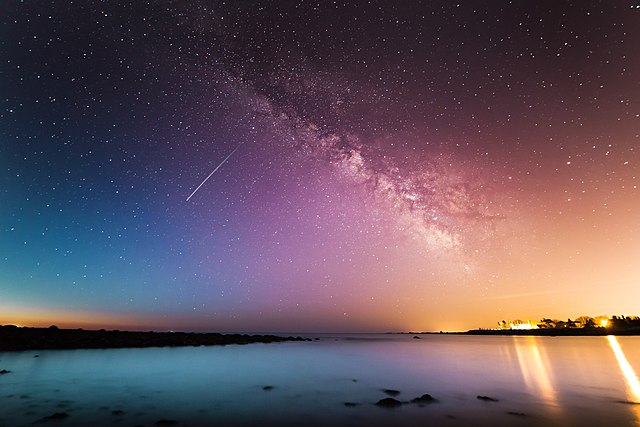
Meteors: Our Mesmeric Shooting Stars
Observing The Night Sky
Have you ever looked up at the night sky and briefly spotted a shooting star? And then wondered what it was and where it came from? Chances are that your shooting star was a meteor.
The existence of meteors has been known since ancient times, but they were not believed to be from our solar system until 1833. An early American astronomer named Andrew Ellicott is believed to be the first person to record a sighting of a meteor shower on 12 November 1799. He witnessed the Leonid meteor shower, a prolific one associated with the comet Tempel–Tuttle; these are spectacular meteor storms which happen about every 33 years and are, in fact, due to be active later this year. The Leonids are named after the location of their radiant in the constellation Leo, which is the place they appear from in the sky.
What Is A Meteor?
Put very simply, a meteor is a rocky object – some are metallic, others a combination of rock and metal. They are formed in space, the result of a small part of an asteroid or comet, called a meteoroid, burning up upon entering Earth’s, or another planet’s atmosphere. They vary considerably in size; from a grain of dust to small asteroids.
What do they look like in the night sky? Meteors look like shooting stars. To the keen sky gazer, a meteor will appear like fireballs leaving trails in the night sky which last less than a second. The level in the atmosphere where we can observe a meteor’s glow is estimated by scientists to be around 50 to 75 miles above the Earth’s surface.
When Is The Best Time To Spot A Meteor?
Meteors can be seen at any time, but the best time to look for them is during what are known as periodic showers. Such showers appear around the same dates each year, when Earth passes through a stream of dust left behind by a passing comet.
According to Space.com, the next meteor shower will be the Perseid meteor shower in August this year. The Perseids are active between mid-July to late August and are due to peak around 13 August. The Royal Museums in Greenwich have said that the Leonid meteor shower will be active from 6-30 November and peak on 17–18 November between midnight and dawn.
How Many Meteors Are There?
A lot! It is believed that millions of meteoroids travel through the Earth’s atmosphere every day, but most are small and burn up quickly. Sources say 17,000 meteorites fall to Earth every year. NASA says that scientists estimate that about 48.5 tons (44 tonnes or 44,000 kilograms) of meteoritic material falls on the Earth each day. That weight is around the size of a Longer Heavy Goods Vehicle (LGV) in the large goods vehicle category.
How Often Do Meteors Fall To Earth?
According to NASA, every 2,000 years or so, a meteoroid the size of a football field hits Earth and causes significant damage to the area.
When Did A Significant Meteor Last Hit Earth?
This occurred ten years ago over Chelyabinsk, Russia, when the sky appeared to suddenly explode. On February 15, 2013, an asteroid about 20 meters in diameter slammed into Earth’s atmosphere at nearly 70,000 kilometers per hour. It was large enough for some material to impact the surface, and the resulting shockwave caused enough damage to the town to leave over a thousand people with associated injuries.
To find out more about meteor showers that can be observed throughout the calendar year, visit NASA’s website.
You can also find more details specifically about the Chelyabinsk event via this link to a youtube feature by Sci.Show.